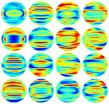Children with TBI have poorer sleep quality and more daytime sleepiness
Results are critical first step toward improving care for children with traumatic brain injuries
2015-06-08
(Press-News.org) DARIEN, IL - A new study suggests that children with traumatic brain injuries (TBI) have poorer sleep and more daytime sleepiness in comparison to healthy children.
Results show that children with TBI were more likely to experience greater daytime sleepiness, sleep disturbances and a poorer overall sleep quality. The children with TBI also had impaired emotional, physical and social functioning when compared to healthy children.
"We were surprised that children with a TBI experienced persistent increases in daytime sleepiness and decreases in sleep quality compared to healthy children," said principal investigator Kimberly Allen, PhD, RN, assistant professor, Center for Narcolepsy, Sleep and Health Research, Department of Women Children and Family Health Science, at the University of Illinois-Chicago.
The research abstract was published recently in an online supplement of the journal Sleep and will be presented Monday, June 8, in Seattle, Washington, at SLEEP 2015, the 29th annual meeting of the Associated Professional Sleep Societies LLC.
The study group comprised 15 children with TBI and 15 healthy children, matched on age, race and maternal education level. Parents of children with TBI and parents of health children completed three surveys related to their child's sleep behaviors and sleep quality: Children's Sleep Habits Questionnaire (CSHQ), Child Sleep Wake Scale (CSWS), and the modified Epworth Sleepiness Scale (ESS).
INFORMATION:
The study was supported by a T32 grant from the University of Washington with mentorship from Drs. Karen Thomas and Carol Landis.
Abstract Title: Sleep after Pediatric Traumatic Brain Injury: A Survey Study
Abstract ID: 1050
Presentation Date: Monday, June 8
Presentation Type: Poster 107
Presentation Time: 4 p.m. to 6 p.m.
The SLEEP 2015 abstract supplement is available at http://journalsleep.org/ViewAbstractSupplement.aspx.
For a copy of the abstract or to arrange an interview with the study author or an AASM spokesperson, please contact AASM Communications Coordinator Lynn Celmer at 630-737-9700, ext. 9364, or lcelmer@aasmnet.org.
About SLEEP 2015
More than 5,000 sleep medicine physicians and sleep scientists will gather at SLEEP 2015, the 29th annual meeting of the Associated Professional Sleep Societies LLC (APSS), which will be held June 6-10 at the Washington State Convention Center in Seattle. The scientific program will include about 1,200 research abstract presentations. The APSS is a joint venture of the American Academy of Sleep Medicine and the Sleep Research Society (http://www.sleepmeeting.org).
About the American Academy of Sleep Medicine
Established in 1975, the American Academy of Sleep Medicine (AASM) improves sleep health and promotes high quality patient centered care through advocacy, education, strategic research, and practice standards. With nearly 10,000 members, the AASM is the largest professional membership society for physicians, scientists and other health care providers dedicated to sleep medicine (http://www.aasmnet.org).
ELSE PRESS RELEASES FROM THIS DATE:
2015-06-08
A nuclear physicist and an archaeologist at the University of York have joined forces to produce a unique appraisal of the cultural significance of one of the world's most important locations for scientific inquiry.
In a paper published in the journal, Landscapes, Professor David Jenkins, of the Department of Physics at York, and Dr John Schofield, Head of the University's Department of Archaeology, have investigated CERN, the home of the Large Hadron Collider on the Franco-Swiss border.
Situated between the Jura Mountains and the Alps, CERN was established in 1954 to ...
2015-06-08
This news release is available in German.
Material scientists at ETH Zurich and the Max Planck Institute of Colloids and Interfaces in Potsdam have developed a new type of sensor that can measure carbon dioxide (CO2). Compared with existing sensors, it is much smaller, has a simpler construction, requires considerably less energy and has an entirely different functional principle. The new sensor consists of a recently developed composite material that interacts with CO2 molecules and changes its conductivity depending on the concentration of CO2 in the environment. ...
2015-06-08
Jackson Laboratory researchers have shown that using an electric current to deliver the CRISPR/Cas9 system, in order to engineer genetic changes in laboratory mice, is highly efficient and significantly improves the system's throughput.
CRISPR/Cas9 has significantly enhanced the precision, speed and ease with which experimental organisms can be genetically modified in order to create models of human diseases. Mice carrying mutations in single or multiple genes or other modifications can be created in one step by injecting the CRISPR/Cas9 system into zygotes (the cells ...
2015-06-08
Metabolism experts are increasingly convinced that obesity and many of the pathogenic changes it entails, such as Metabolic Syndrome and type 2 diabetes, are a result of chronic inflammatory processes in fatty (adipose) tissue. The adipose tissue of obese people exhibits higher-than-normal quantities of almost all types of immune and inflammatory cells.
"We are quite convinced that immune cells play a role in the pathogenic consequences of obesity," says Professor Hans-Reimer Rodewald of the German Cancer Research Center (Deutsches Krebsforschungszentrum, DKFZ). "But ...
2015-06-08
Scientists have discovered a trigger that allows breast cancer cells to spread to the lungs.
They have found that blocking the signals in mice with breast cancer greatly reduces the number of secondary tumours found in the lungs.
The findings could lead to new therapies that stop the progression of breast cancer, the researchers at the University of Edinburgh say.
The majority of deaths from breast cancer are caused by the tumour spreading to other parts of the body. The lung is often one of the first organs to be affected.
Researchers at the University's MRC Centre ...
2015-06-08
NEW YORK (June 8, 2015) - Whole genome sequencing can quickly isolate the specific strain of bacteria causing an outbreak, identify the source of contamination, and enable rapid infection prevention to stop the spread of infection, according to a study published today. The findings, based on the examination of an outbreak of Pseudomonas aeruginosa in an Australian neonatal unit, appear in Infection Control & Hospital Epidemiology, the journal of the Society for Healthcare Epidemiology of America.
"Bacteria, such as P. aeruginosa, have evolved into many strains and frequently ...
2015-06-08
WASHINGTON, June 8, 2015 -- With Caitlyn Jenner's recent transition in the news, more attention is being paid to the transgender community. A big part of gender transition is hormone replacement therapy (HRT). This week, Reactions talks about the chemistry of HRT and what happens when the body undergoes major shifts in estrogen and testosterone -- two very powerful hormones. Check it out here: http://youtu.be/l5knvmy1Z3s.
Subscribe to the series at http://bit.ly/ACSReactions, and follow us on Twitter @ACSreactions to be the first to see our latest videos.
INFORMATION:
The ...
2015-06-08
WASHINGTON -- A new way of rapidly identifying bacteria, which requires a slight modification to a simple microscope, may change the way doctors approach treatment for patients who develop potentially deadly infections and may also help the food industry screen against contamination with harmful pathogens, according to researchers at the Korea Advanced Institute of Science and Technology (KAIST) in Daejeon, South Korea.
Described this week in The Optical Society (OSA) journal, Optics Express, the new approach involves bouncing laser light off individual bacteria under ...
2015-06-08
SAN FRANCISCO (June 8, 2015) -- Scientists from the California Academy of Sciences are celebrating World Ocean's Day with a slew of brand new marine discoveries--more than 100 species that are likely new to science. The Philippines is home to the most biologically diverse waters on Earth, and remains the centerpiece of the Academy's multi-year exploration of the Coral Triangle's biological treasures. Over the course of this seven-week undertaking, funded by the National Science Foundation, scientists collected countless marine specimens, including rare and new species of ...
2015-06-08
Bistatic/multistatic SAR has attracted global attention and made remarkable progress recently. Many key techniques have been overcome. Aiming to grasp the developing trend of the bistatic/multistatic SAR, the corresponding special issue has been compiled and published on SCIENCE CHINA Information Sciences, no. 6, 2015, which is devoted to integrate the key techniques together such as bistatic imaging, interferometry, change detection and the experiment with high quality etc.
The modified Stolt map in the frequency domain was introduced in the bistatic imaging algorithm ...
LAST 30 PRESS RELEASES:
[Press-News.org] Children with TBI have poorer sleep quality and more daytime sleepiness
Results are critical first step toward improving care for children with traumatic brain injuries



